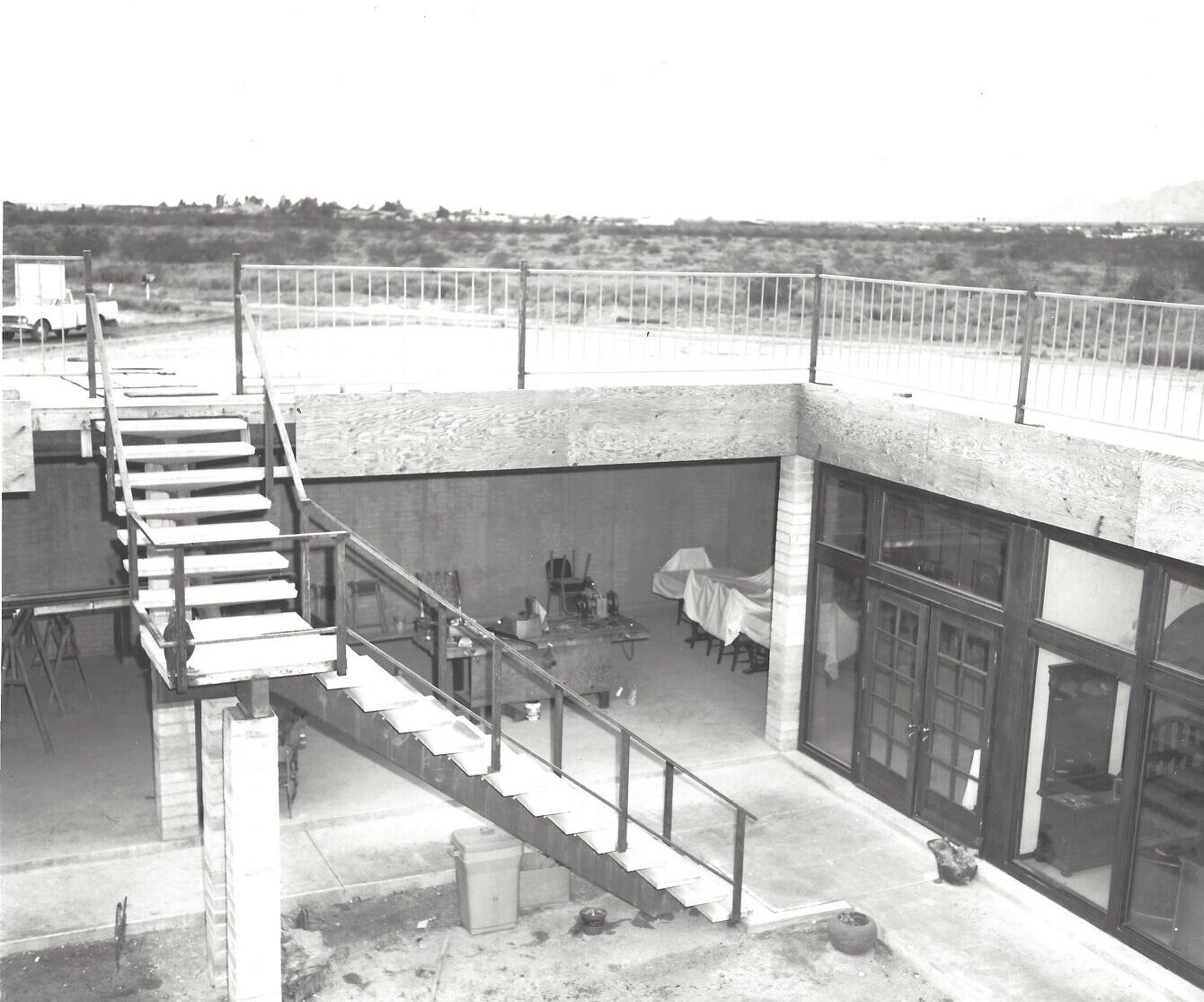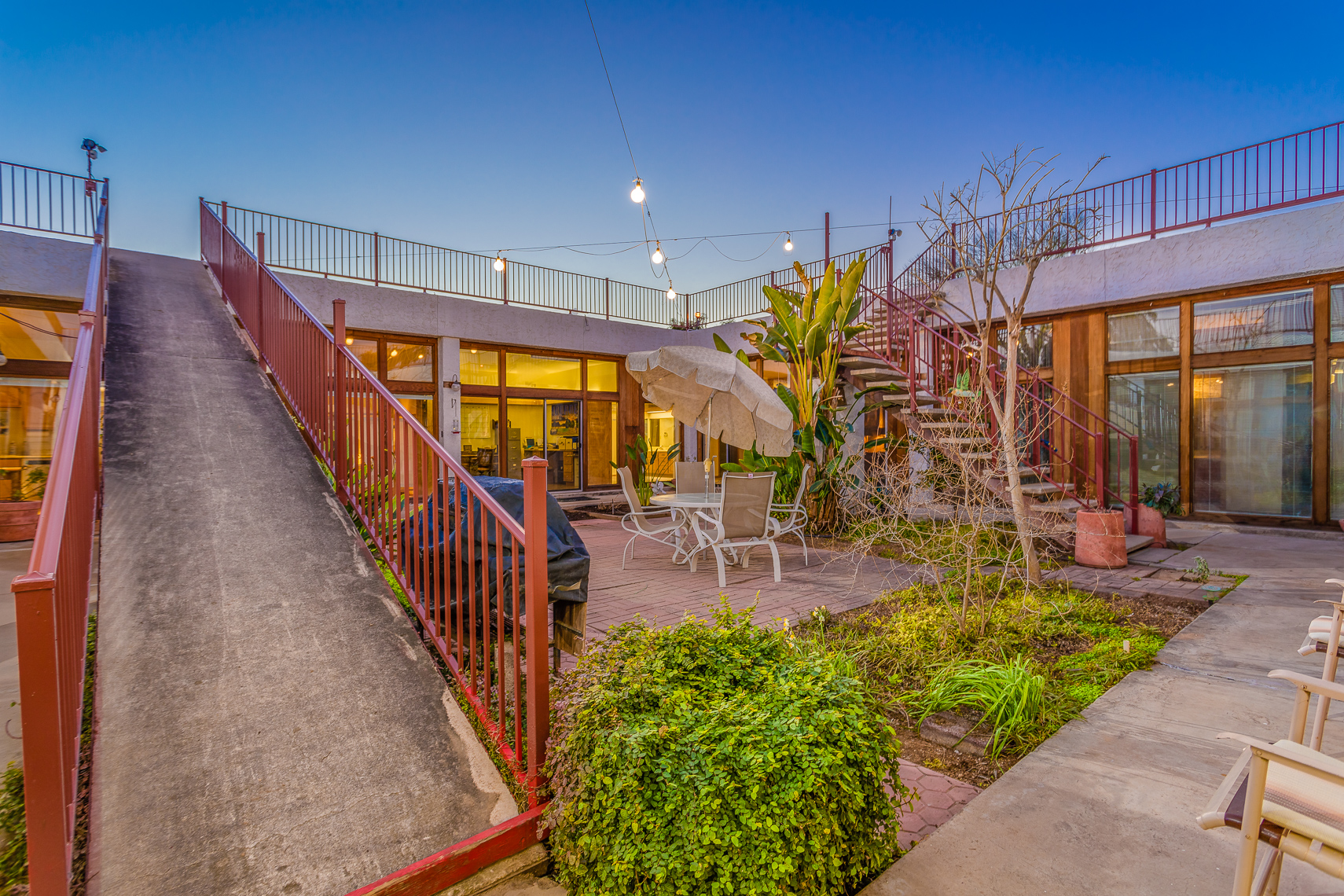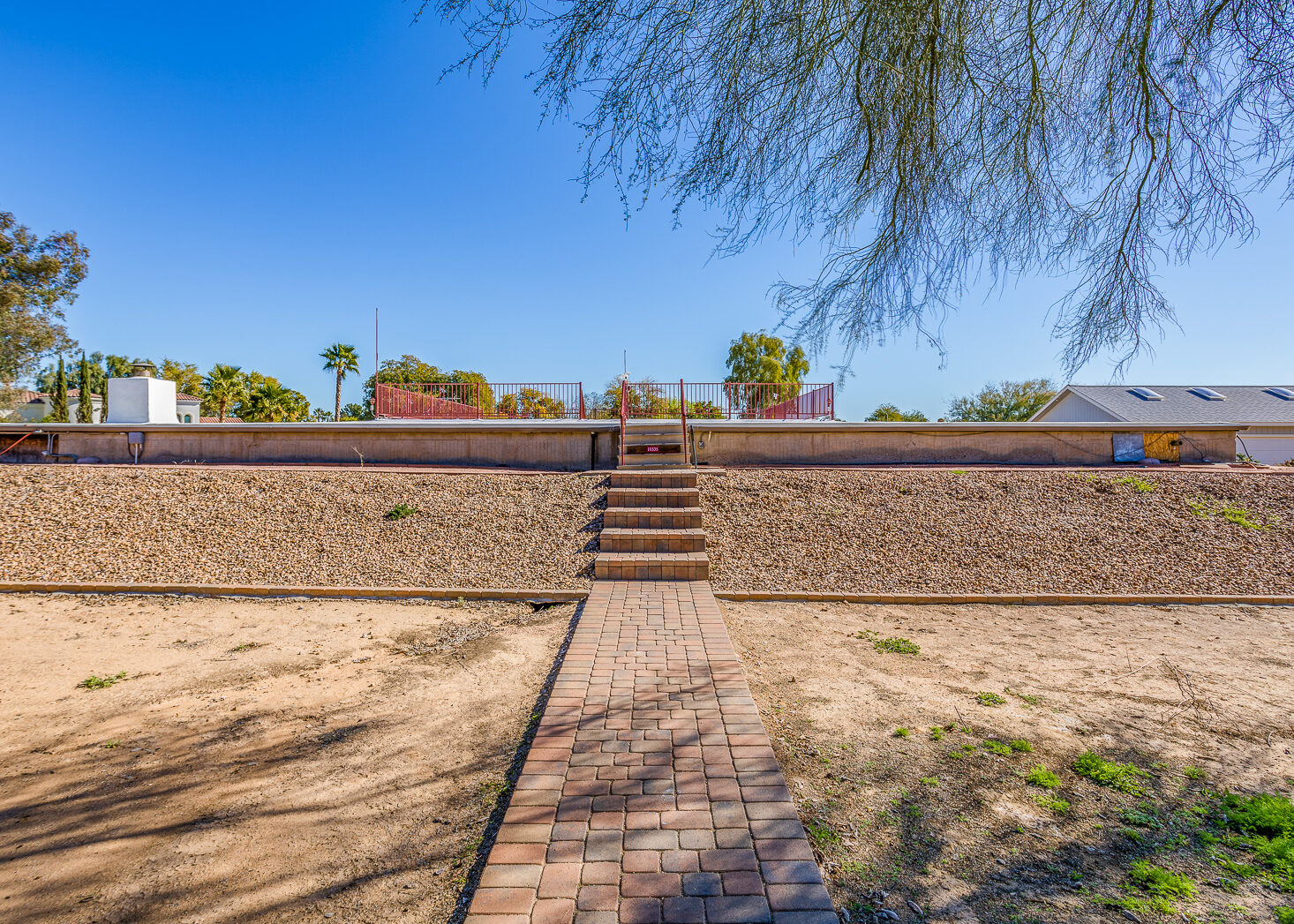Be part of the conversation: azarchitecture/Jarson & Jarson Architecture blog covers architecture and civic topics that comment on what’s happening in the Valley’s diverse design community. Here’s what’s happening now:

Subterranean Culture: A Spotlight on the Jimenez House – Part 1
Back when the world felt endless, every mile was a journey into the unknown. A map could get you to the other side of the desert, but what sites would capture your attention?
There was a level of mutability to the earth, a collective transcribing of dreams as the world first opened its eyes to the modern world. And in a desperate quest to find itself and fully awaken, people sought to establish a center. Movement was made with cement and steel, basic materials salvaged from the earth, tumbling into great machines that allowed for breathtaking speed and sturdy development.
Now that we’re here, the world feels so small. But in reality, there’s still an endless amount of ways to experience its unparalleled wonders. The southwest, for example, carries a magic in its heart that is nearly indescribable to most people unaccustomed with the terrain. In cartoons and fiction, it’s a death trap with hovering vultures and vicious rattlesnakes. But of course, that’s not it at all.
In 1978, Ray Jimenez sought to dispel the myth by building a home – underneath the earth.
With oil prices rising due to the infamous embargo in ‘79, local energy prices spiked across the board. If that sounds familiar, you might be chuckling to yourself. So might Ray.
In that atmosphere of uncertainty, Jimenez had a visionary idea: Make something that didn’t rely on technology. Use the desert to create a home that not only survived, but that also gave back to its guests.
“I was convinced you could live in the desert without air conditioning or heating,” he once remarked, a wild thought in a city that boasts 120 degree temperatures on a yearly basis.
As children fried eggs on the hot tar of their freshly paved neighborhood street corners for fun, Ray was staring into the flat desert, wondering how it might work to live without modern conventional heating and cooling.
When an architect draws their line in the sand, using the soil as paint brush rather than a placeholder, a symbiosis between human and habitat is allowed. Restoration becomes possible, if not somewhat of a self-fulfilling prophecy. Integration was key for Ray and his wife, Fae.
What did that look like?
At first glance, the property is either overlooked or disregarded. If Tarkovsky made a western, it would take place here. That is, if you even noticed it on the screen. A bond villain might dare to live in such a unique environment, but what about a three or four person family?
The subterranean property is a flat 2.5 acres, and it’s easy to miss from afar. As you walk onto the land, the home blossoms beneath the desert soil. A cherry gate surrounds a much-hidden courtyard like candy cane gift wrap, and 14 feet below, a salmon brick path creates a walkway that meanders through tropical plants and flowers. All of it is encircled by gorgeous open windows leading to each room of the home, packaged underneath a set of lights that illuminate the courtyard after that iconic desert sunset.
Imagine, reading a book, underneath the strong heat of the desert summer, listening to the hypnotizing sound of cicadas, all while still retaining a natural cool temperature. How about suntanning on a lazy Sunday to the sounds of the radio as the wind tunnels in, calmly cloaking your back?
In the middle of August that seems impossible. But it’s not.
Symmetry is at the heart of the structure, but I wouldn’t describe the shape as a square. This is a subterranean diamond in the rough terrain of Phoenix, Arizona, and it’s as intricate and beautiful as one might or might not expect. The experience shines through.
Inside this home, you tend to feel like you’re in another world. One might imagine spending time in a villa in Barcelona, or enjoying a cup of warm tea in Morocco. In these cities, there is an obvious history that bleeds into the nooks and crannies of every street corner. Jimenez’s subterranean home shares that sentiment.
So how does it work?
After spending 25 years learning about heat transfer and structural dynamics at GED and Motorolla, Ray took an interest in sustainability. This led to the studying of Arizona’s history, specifically Native American dwellings in the southwest. Solar water heating, solar energy, wind powered electric generation, rain collection and storage, and a year round vegetable growing greenhouse were all items on the table.
Like any experiment, it required staying dynamic. Learning from actually living in something allowed for this whole thing to be a success. Both the summer and the winter had to be habitable. If one season required an uptick in conventional heating and cooling, the structure would lose some of the balance it boasted. It had to be designed properly, and that required financing.
It wasn’t cheap. It took two entire years for the city to give it approval. Banks wouldn’t loan the Jimenez’s money. The idea was too wild, an investment too risky. To build it, they had to fund it on their own dime. Month by month, they got it done, and by the time the 1980 New Year’s ball fell over Manhattan, the desert dwelling was fully built.
The unique and sophisticated courtyard is what allows the home to stay cool, or in the winter months, warm. Meanwhile, a 25-foot berm prevents the heat of the summer from penetrating into the home. This creates what is called a thermal sink, a way to absorb the heat and transfer it elsewhere. This is desert living at its finest. It just works.
“Summer doesn’t get here until fall,” Ray said. And he was right. Offsetting heat is a game-changer to someone paying upwards of $400 in energy bills a month.
Just to be safe, there is conventional heating and cooling on the property now, but the prices are one-tenth per square foot what they cost on the average suburban pressure cooker. The desert can be brutal, but this home is adaptable. As solar panels replace old energy systems, this 2.5 acre property has a major leg up in design.
Of course, a lot went into this that has been unsaid. This was no easy feat. Like the hidden pathways to a courtyard in the subterranean center of the desert, there were an ample amount of things to figure out.
Originally, Ray thought it ideal to bury the house entirely. But innovation is not singular, nor is any idea put together by one person. It requires collaboration, a host of people to put the pieces of the puzzle together.
As it turned out, Ray’s wife, Fae had some reservations with living in the center of the earth, closed off from any, if not all natural light. There was plenty of sun in Arizona to spare, and it wanted to be used, so why not give this underground property an open arena that connected to each and every room, symmetrically, allowing it to breathe?
This was their center, the glue that held the property together. This fourteen-foot deep trench was what gave the home magic, transporting guests from out of town to other worlds and exotic locations.
That’s because stepping inside this home allows Arizona to feel like something new. A Phoenix home, as exotic as a Sicilian palazzo.
Even by today’s standards, this home is unique, energy efficient, and gorgeous. And to understand just how earth-shattering some of these ideas are, it’s important to look at what’s lasted and what hasn’t in modern design. Ray and Fae’s home is only one generation old, but it feels new and sustainable. That’s what makes this place so exciting.
When we talk about sustainability, we lean on metrics. Data comes in as numbers on a sheet of paper, but that doesn’t tell the whole story. Our stories are the fuel to our souls, turning cities into vibrant communities that connect rather than separate. A hole in the ground may seem a bit introverted, but when the center acts as a heart, it brings guests together.
Places need stories, too. Those living in places without them find themselves existing in the threadbare center of city planning, through agreements made without thought or care as to how this might shape people’s behaviors. Have you ever stepped into a room that punishes you just for walking in? That’s a design flaw with consequences.
Perhaps Ray and his wife, Fae weren’t thinking about those consequences. But by opening themselves up to the structure of the home, it pulled everything together like a web.
In the summer of 1978, Ray Jimenez had a new vision for desert living. And now, 45 years later, this newly sold desert haven is a testament to that dream. Another lucky owner will soon get the glory of inhabiting such a unique home. If they look back, they’ll get echoes of Ray and Fae’s story.
The age of stone and metal set the stage for massive development, but in its wake, something new was born. Culture had solidified like concrete. A few good blueprints were decided upon. And now, we take for granted the way things have become. But have we ever stopped to ask ourselves what was lost along the way?
Better yet, as heat sweeps through the valley, and energy prices climb, how can we make this uncertain future work for us? A restlessness stirs in the hearts of many desert-dwellers. Sustainability is at the forefront of everyone’s mind, but beyond necessity, imagination must blossom structures into something we want to inhabit. Without that thread or connection, we distance ourselves from the world. Ironically, we find ourselves underground, eyes blocked to the sun, open only to the artificial glow of our tablets.
But perhaps it isn’t so black and white. Perhaps, a new journey has begun. Right under our noses, deep within the desert soil.
We can thank the Jimenez family for attempting to dig us out. The story of their subterranean home is a tale of discovery. It was an investment on an idea. What’s so remarkable is that it speaks for itself.
Roll up to the flat property. Dust off the sand between your toes. And take a dive into one of Phoenix’s coolest houses.





